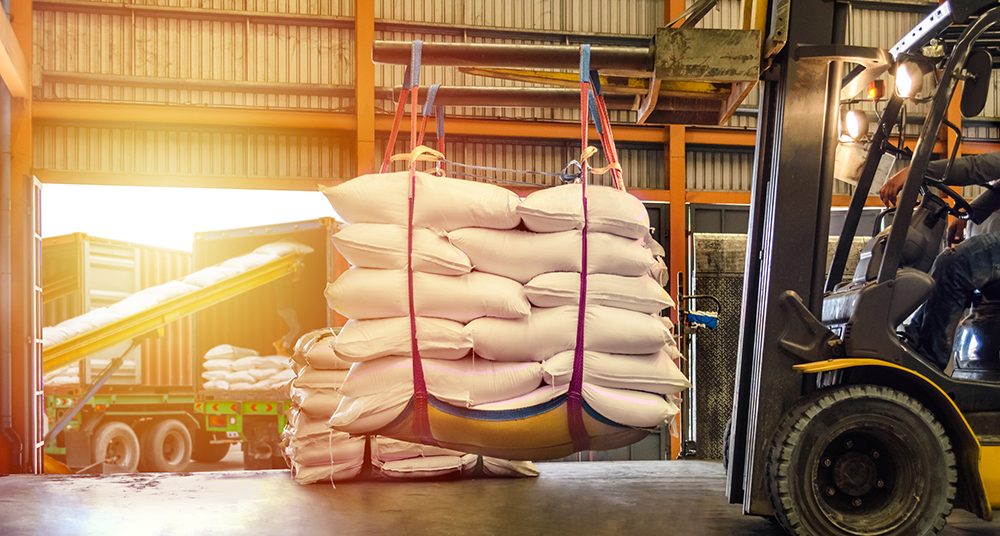
As the IoT develops, more possible applications for it keep popping up. It makes its way into a lot of conversations these days, especially within the industrial world. That's probably because its use holds a lot of promise in this sector.
The IoT has a lot of potential for manufacturing and logistics, and material handling is a substantial part of that. Material handling is the backbone of the industry, so an improvement there means advances in manufacturing as a whole. You have the IoT to thank for many improvements here.
It's easy to say the IoT will change material handling for the better, but what about the specifics? Here's a closer look at how it is and will be improving things down the line.
Where the IoT Fits in Material Handling
It may be easier to list where the IoT can't work in material handling. Nearly every aspect of the process involves something that can either provide a data source or benefit from one. One of the most popular, and broadest, of these IoT applications are warehouse management systems.
Warehouse management systems (WMS) have existed for decades, but IoT technology takes them a step further. IoT WMS uses sensors and tags on materials and products to track them throughout the warehouse. That way, facilities have an interconnected, accessible system telling them where everything is and what it's doing.
More recent applications include autonomous vehicles, robotics, quality-tracking sensors and environmental controls. Everything from storage to shipping can use the IoT. These technologies are so versatile that the material handling equipment market could be worth $200 billion by 2025.
Safety
One of the most critical changes the IoT will bring in material handling is improved safety. Depending on the types and amounts of materials you work with, this can be a risky line of work. IoT applications like automation and monitoring technologies can mitigate dangers.
An average 55-gallon drum can weigh between 400 and 600 pounds, which could easily injure someone. The best way to keep workers safe from this situation is to remove them from it, which IoT-enabled driverless vehicles do. Connected infrastructure can help guide self-driving forklifts and pallet jacks, as well as monitor their performance.
IoT sensors also enable predictive maintenance, which helps warehouses avoid hazards from unexpected breakdowns. By monitoring machines' inner workings, these sensors can warn employees when an issue might arise. That way, they can fix minor problems before they become more pressing and dangerous.
Efficiency
Many of the same technologies that improve material handling safety also increase efficiency. IoT-enabled automation is a shining example of this approach that tackles two problems at once. Not only do robots make things safer for workers, but they also help them perform tasks faster.
Some warehouses are using automated vehicles to load and unload trucks alongside workers.
Machines are excellent at handling repetitive work, and with the help of the IoT, they can access data to make them even more efficient. With these robotic assistants, people could finish a job in half the time it would take them otherwise.
IoT sensors throughout a warehouse can gather data on different processes. With this information, WMS can then find any inefficiencies that exist in the facility. Managers can then take these findings to improve subpar processes, creating a more efficient materials handling approach.
Quality Control
The IoT can also help warehouses keep an eye on the quality of their materials. Material handlers need to monitor some products to ensure they last throughout the manufacturing and logistics chain. IoT sensors provide a scalable, accurate solution to this issue.
If something needs to be refrigerated, IoT sensors inside the fridge can monitor its performance. In addition to detecting the temperature, they could also track factors like energy consumption and compressor cycles. These devices could point to where the issue originates.
These insights are especially valuable to material handlers that deal with potentially dangerous products. Hazardous items could be a risk if they're not in a well-ventilated and dry area, and IoT devices could ensure storage meets these requirements. This application would make sure materials retain their quality and help protect workers.
The Shift Toward Industry 4.0
The manufacturing and logistics world is becoming more digitized by the second as Industry 4.0 starts to take over. If material handlers want to take advantage of all the data they generate, they'll have to turn to the IoT. These technologies will help them stay competitive in the industry of tomorrow, as well as ensure the safety of their employees.
As industry moves toward a digital approach, IoT adoption will only increase. The Internet of Things won't just tweak material handling, but it will change it entirely, from safety to efficiency to quality control. Because of this, the future looks bright.
Edited by
Ken Briodagh





